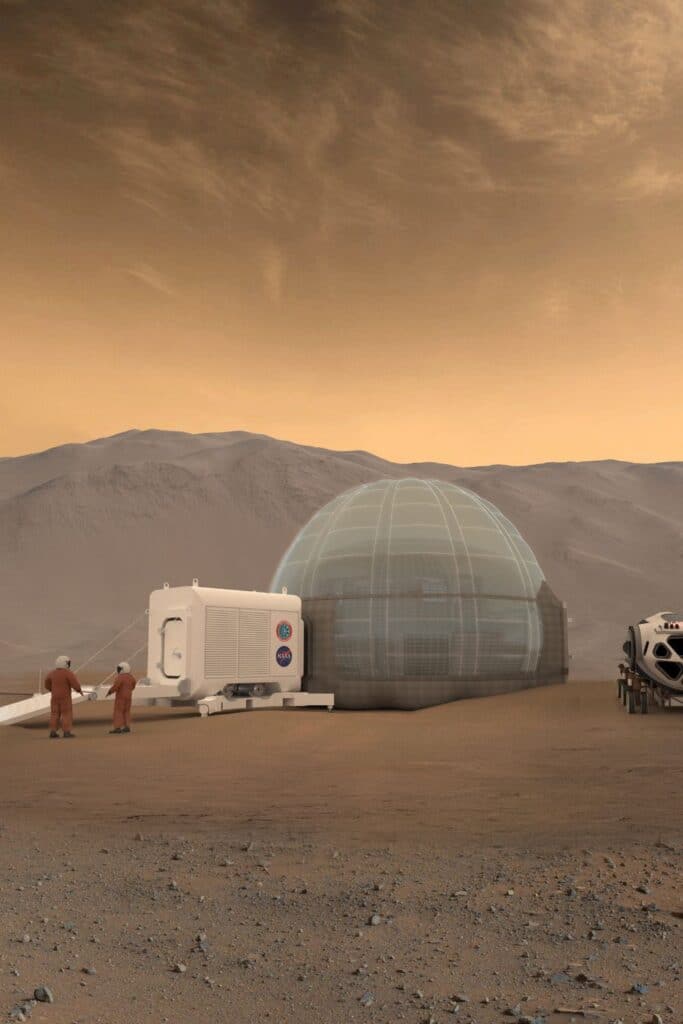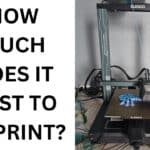
3D printing revolutionizes space exploration, with NASA and SpaceX using it to cut payload weight, enable on-demand manufacturing, and build habitats—unlocking limitless innovation for future missions.
3D printing, also known as additive manufacturing, is transforming industries on Earth and is now making significant strides in space exploration. NASA and SpaceX, two of the most influential organizations in aerospace technology, are leveraging this innovative technology to address the unique challenges of space missions. From creating essential tools on demand to potentially building habitats on other planets, 3D printing is opening up new possibilities for more efficient, sustainable, and ambitious space missions. This article delves into how NASA and SpaceX are using 3D printing in space to revolutionize space exploration, providing detailed insights into their initiatives, benefits, challenges, and future prospects.
Affiliate Disclosure
We participate in Amazon affiliate programs, earning fees from qualifying purchases via links at no extra cost to you. It’s how we keep this blog rolling and my 3D printers buzzing with fresh filament for reviews like this one!
Upgrade your setup with the ANYCUBIC Photon Mono 4 10K Resin 3D Printer ($249) on Amazon now!
What is 3D Printing in Space?
3D printing in space involves creating three-dimensional objects layer by layer using specialized materials adapted for the microgravity environment. This technology allows astronauts to produce tools, components, and even habitats directly in space, reducing the reliance on Earth-based manufacturing and transportation. The ability to manufacture on-demand in space is a game-changer, offering numerous benefits such as cost efficiency, sustainability, and enhanced mission flexibility.
Related: 10 Best 3D Printers in 2025 (All Budgets)
Types of 3D Printing Technologies Used in Space
- Fused Deposition Modeling (FDM): This is the most common type of 3D printing, where a thermoplastic filament is heated and extruded through a nozzle to create layers.
- Stereolithography (SLA): This method uses a laser to cure liquid resin into solid layers.
- Selective Laser Sintering (SLS): This technique uses a laser to sinter powdered material, binding it together to create a solid structure.
Related: Compare 3D Printers: Ultimate Tool To Find Your Perfect 3D Printer
NASA’s Vision for 3D Printing in Space
NASA has been at the forefront of adopting 3D printing technology to address the challenges associated with space travel. The agency’s initiatives in this field are both innovative and far-reaching.
International Space Station (ISS)
In 2014, NASA installed a 3D printer on the ISS, marking the first time such technology was used in a microgravity environment. This “Additive Manufacturing Facility” can produce various tools and components on demand, eliminating the need for extensive spare parts inventories. The ability to print tools and parts directly on the ISS has significantly enhanced the station’s operational efficiency.
Related: Best Industrial 3D Printers – Explore printers for advanced applications.
Case Study: The First 3D-Printed Object in Space

The first object 3D-printed in space was a printhead faceplate, engraved with the names of NASA and Made In Space, Inc., the company that collaborated on the technology. This milestone demonstrated the feasibility of 3D printing in microgravity and paved the way for more advanced applications.
Future Applications
NASA is exploring advanced techniques like metal additive manufacturing and multi-material printing for more complex applications. The agency also has ambitious plans to use 3D printing to construct habitats on Mars. These habitats would be built using local materials, reducing the need to transport construction materials from Earth.
Related: 2025’s Top 10 3D Printing Filaments for Industrial Use – Learn about industrial-grade filaments.
The Mars Ice Home

One of the winning designs from NASA’s 3D-Printed Habitat Challenge is the Mars Ice Home, a habitat constructed using 3D-printed ice. This concept leverages the abundant water ice on Mars to create a protective shell that shields inhabitants from radiation.
Benefits
NASA aims to decrease costs and risks, and create an on-demand supply chain for needed tools and parts by testing 3D printing in space. Long-term missions would greatly benefit from onboard manufacturing capabilities, making space exploration more sustainable and efficient.
SpaceX and 3D Printing
SpaceX is also embracing 3D printing to build rocket engines and spacecraft components. The company’s innovative use of this technology has set new standards in the aerospace industry.
Emergency Escape Rockets
SpaceX utilizes additive manufacturing to build the emergency escape rockets on its manned Dragon spacecraft. These rockets are critical for ensuring the safety of astronauts during launch abort scenarios.
Rocket Engine Parts
In 2014, SpaceX successfully flew a 3D-printed rocket engine main oxidizer valve on a Falcon 9 rocket. This achievement demonstrated the reliability and performance of 3D-printed components in actual flight conditions.
SuperDraco Engine Chamber

SpaceX 3D-printed a SuperDraco engine chamber for the escape system, significantly reducing lead time compared to traditional machining. The SuperDraco engine is a key component of the Crew Dragon spacecraft, providing the necessary thrust for launch abort scenarios.
Velo3D Partnership
SpaceX has a deal with Velo3D, a metal AM company, to license 3D printing technology. With over a decade’s worth of experience using 3D printing for rockets, SpaceX continues to push the boundaries of what’s possible with additive manufacturing.
Related: Best 3D Printing Software for Industrial Applications – Discover software for complex projects.
Advantages and Challenges of 3D Printing in Space
Pros
- On-Demand Manufacturing: Reduces reliance on Earth by producing tools and components as needed.
- Reduced Costs: Cuts launch expenses by minimizing heavy payload transportation.
- Sustainability: Reduces waste through material recycling and local resource utilization.
- Efficiency: Enables complex designs, lowering mission time and costs.
- Customization: Tailors tools and parts to mission-specific needs for greater flexibility.
- Enhanced Robustness: Produces durable parts ideal for extreme space conditions, boosting mission safety.
Cons
- Microgravity: Causes material jamming and uneven layering, needing specialized printers.
- Vacuum Conditions: Makes cooling difficult, requiring printers suited for zero-pressure environments.
- Temperature Variations: Affects material properties, demanding thermal-resistant printer designs.
- Material Reliability: Requires rigorous testing to ensure durability and prevent mission failures.
The Future of 3D Printing in Space
3D printing is expected to play an integral role in future space exploration, enabling missions to the Moon, Mars, and beyond. As the technology advances, it could lead to safer space missions, the creation of purer pharmaceuticals, and the construction of communications antennae and solar reflectors. Collaboration between NASA, SpaceX, and other companies will drive innovation and advancements in 3D printing for space applications.
Related: Top Metal 3D Printers – Explore metal printing for space-like applications.
Collaborative Efforts
Collaborative efforts between government agencies, private companies, and research institutions will be essential for overcoming the challenges and unlocking the full potential of 3D printing in space. Initiatives like NASA’s Centennial Challenges and partnerships with companies like Made In Space are paving the way for future innovations.
Related: Best Beginner 3D Printers of 2025: Affordable Picks Under $500
Conclusion
3D printing is transforming the landscape of space exploration, offering unprecedented opportunities for innovation and efficiency. NASA and SpaceX are at the forefront of this technological revolution, leveraging 3D printing to overcome the unique challenges of space missions. From reducing payload weight to enabling on-demand manufacturing and habitat construction, the applications of 3D printing in space are vast and varied. As technology continues to evolve, the possibilities for 3D printing in space are virtually limitless, promising a new era of exploration and discovery.
Upgrade your setup with the ANYCUBIC Photon Mono 4 10K Resin 3D Printer ($249) on Amazon now!













